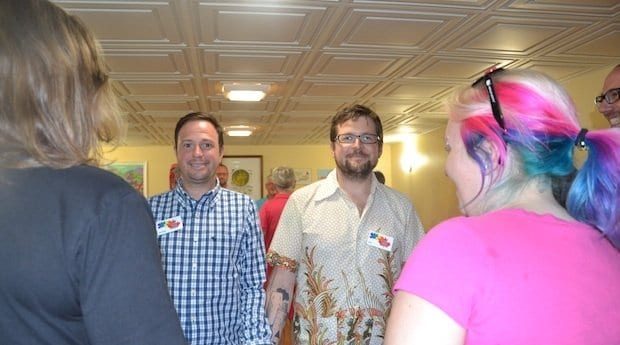
Gay square dance tends to be more informal and includes high-energy flourishes that set dancers apart from their straight counterparts. Credit: Julie Cruikshank
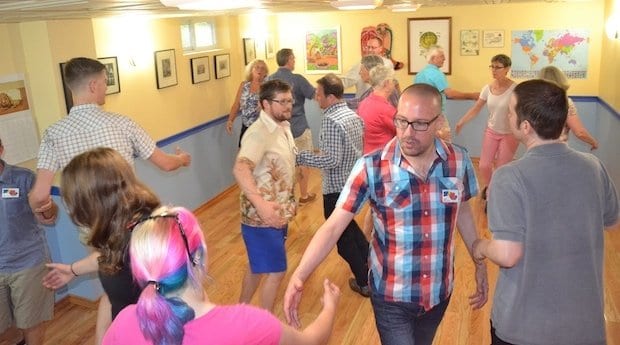
The group has a huge range of ages, with members ranging from folks in their 70s all the way down to people in their 20s. Credit: Julie Cruikshank
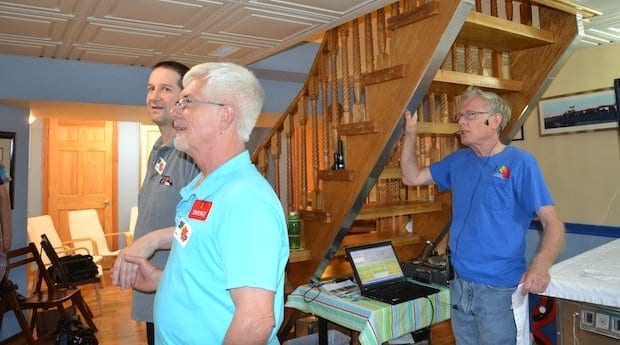
Richard Sharman, right, is the group's caller. He says the most challenging aspect of the dance is making sure everyone ends up back in their original position at the end. Credit: Julie Cruikshank
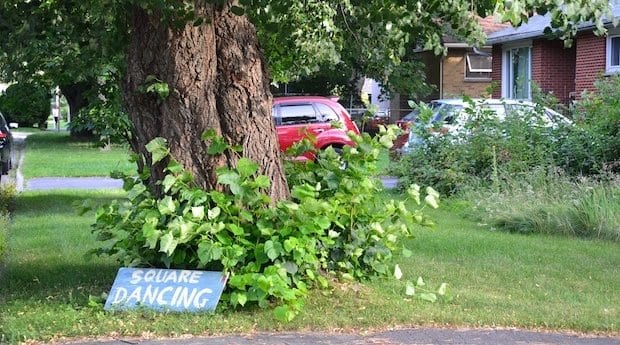
The group meets on Wednesday nights at Sharman’s Pinecrest home. Credit: Julie Cruikshank
When you think about square dancing, if indeed you do, you probably picture a group of seniors in funny outfits getting their groove on to country music. For most of us, square dancing is something we had to suffer through for a few weeks in middle-school gym class, only to abandon it summarily when we reached adulthood for pursuits more befitting the urban hipster (board games, anyone?).
But square dancing has found a surprising niche in the queer community, with groups throughout North America and worldwide. Gay square dance differs from more traditional forms in that it’s more relaxed, with no special dress codes, no fixed gender roles and a variety of boisterous and vocal stylings that set it apart. Canada has three clubs: one in Toronto, one in Vancouver and one in Ottawa.
The Ottawa Date Squares meet Wednesday nights in the basement of Richard Sharman’s Pinecrest home. An energetic bunch, they range in age from people in their 60s and 70s to members in their 20s, 30s and 40s. The group has been around since 1995 but went on hiatus from 2007 to 2013 when not enough dancers could be found. It started back up last September.
“The first night we had exactly eight dancers,” Sharman recalls (eight dancers make up a square). After a few false starts, the group was able to pull together enough people to keep going and now has enough members for two squares and some change. “My friends all laughed at me when I said I was going,” says James Williamson, 46. “I forced them to come to watch, and then they all got dragged into a square and forced to do it. They all fell in love and they’ve joined it as well.”
The gay community, naturally, has put its own flourishes on square dancing. “There’s more styling,” Sharman says. “It tends to be more energetic.” Dancers hoot, holler and high-five as they move through the complicated footwork. It’s that energetic flair that drew many dancers, both gay and straight, to the Ottawa Date Squares. “I’m a senior and I’ve been dancing since I was a child,” Marguerite Evans says. “This is the best group of dancers I think I’ve ever danced with.”
A former healthcare worker, Evans says that all the styling means square dancing is an excellent cardiovascular workout. “You’re getting a full approximately eight kilometres of footwork in the space of two hours,” she says.
“There’s a mental part of it as well as a physical part,” Sharman adds. “You learn the calls, but you don’t learn the dance, so you never know what’s going to come next. There’s a puzzle element of it.”
Square dance traditionally has different steps depending on the gender of the dancers, with men typically leading and women following. To get around this problem, the Date Squares allow participants to choose whichever role they’d like to dance. Beginners stick to their assigned position for the first year while they’re learning, but many of the more advanced dancers know the steps for both roles, making it easier to form a square and eliminating the need for couples-only participation.
Sharman is the caller, giving directions to the dancers as they bob and weave around the floor. The objective, he says, is to keep the dancers moving and to have them end up back in their original positions at the end. “Half the time I don’t get them back in the right place, but oh well — they’re pretty lenient,” he says with a chuckle.
“Any mistake is not met with criticism at all,” says Graham Moore, 36. “The proper technique is obviously encouraged, but [improper form] is never criticized. We all laugh and joke around.” This is a marked difference from more traditional groups, Evans explains, where proper adherence to form can be enforced quite strictly. “This group is known for its sense of humour,” she says.
The social aspect is also a draw for most dancers. “It’s very social,” says Andrew Arcand, 40. “It’s about dancing, [and] I have yet to meet a gay man who doesn’t like to dance!”
“I think gays do it a little more mainstream and cool than the way that the straights do it,” Williamson adds. “It’s young, cool, hip, and you can do it from eight to 88.”
The Ottawa Date Squares meet weekly on Wednesdays from 7 to 9pm.
They are about to take a summer hiatus but are actively seeking new members for September.
The group starts up again on Sun, Sept 7 with free introductory sessions from 2 to 5pm and again on Sept 10 from 7 to 9:30pm.
For more information, visit
iagsdc.com/ottawa
or email
datesquares.yiq9z@ncf.ca
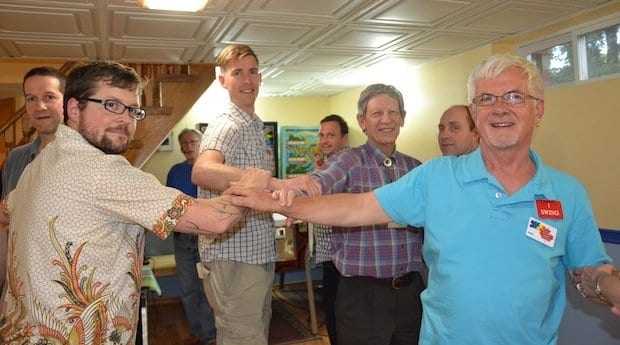
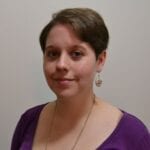
 Why you can trust Xtra
Why you can trust Xtra


